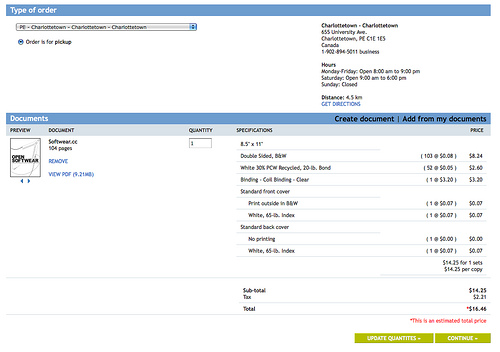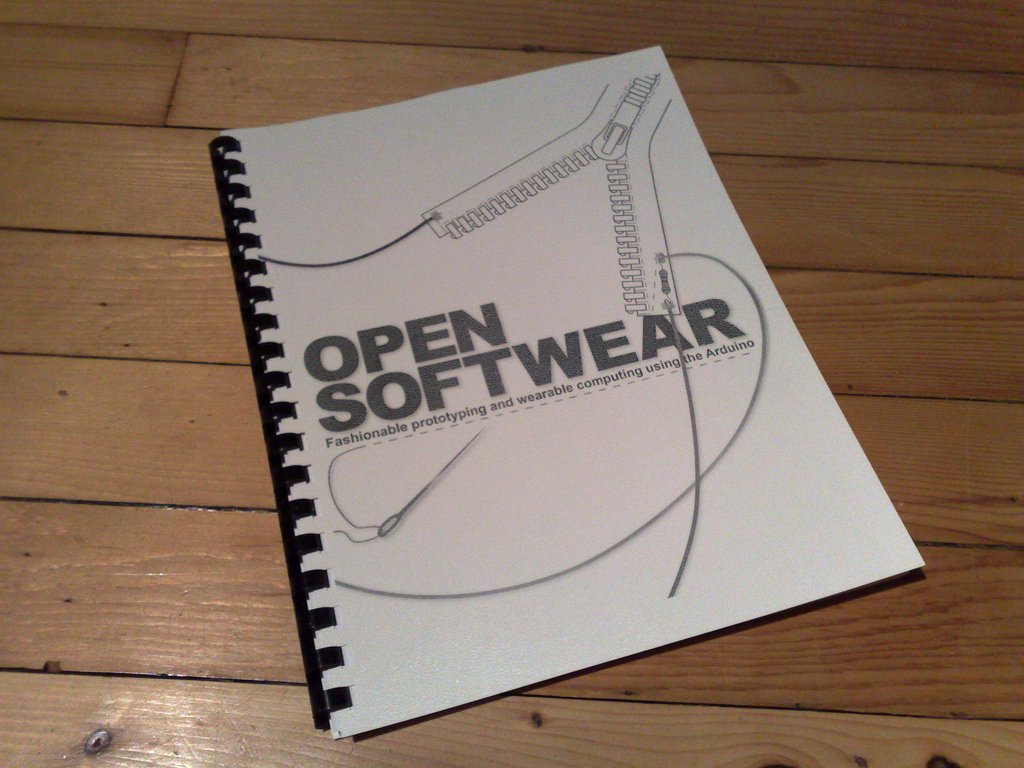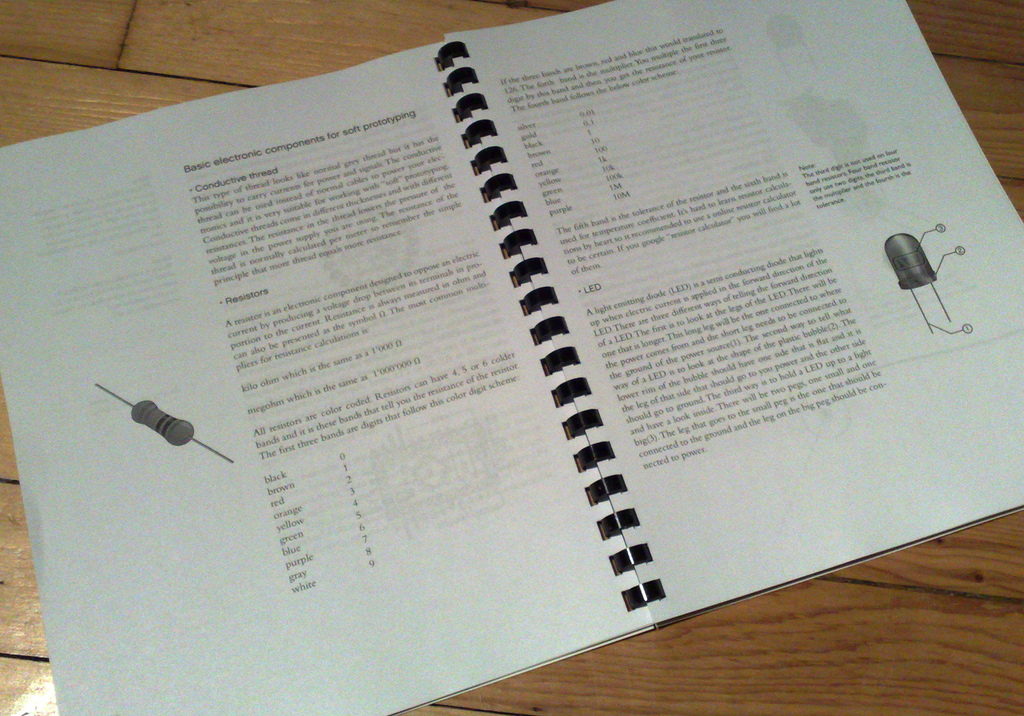Back in June I found myself standing on platform #5 of the train station in Malmö, Sweden waiting for the 8:02 a.m. train to Copenhagen with Catherine, Luisa and Olle when an intriguing looking man approached us on the platform. He was intriguing mostly because he was carrying a substantial looking metal briefcase that was held together with green gaffer’s tape. This man turned out to be known to Olle and Luisa: he was David Sjunnesson, an interaction designer, hacker, and Arduino propagator headed to the same reboot conference that we were.
Over the next few days I got to know David a little — we ended up sharing the train from Malmö more than once — and on the final afternoon of reboot I was in the room as David skillfully facilitated a Full Body Arduino workshop.
When I got home to Canada I started to follow the RSS feed of 1scale1, the Malmö-based “critical research studio” that David is a part of, and it’s through the 1scale1 blog that I came to learn, this afternoon, of a wonderful new book that comes out of 1scale1 called Open Softwear: Fashionable Prototyping and Wearable Computing using the Arduino.
The book is wonderful on several levels. First, the subject matter hits at the heart of my current obsession with physical computing and DIY, second it’s well-written and lovingly designed, and third, and perhaps most interesting, it has been published with a Creative Commons Attribution-Noncommercial-Share Alike 2.5 Generic license.
This means that, among other things, I was free to grab the PDF of the book and print up a copy for myself. This turned out to be an interesting and fulfilling exercise in its own right.
Sending PDF files to local printers here in Charlottetown has always been inconvenient or expensive or both, so I was initially reluctant to go through the hassle. Before giving up though, I decided to try Staples (Staples is a Canadian big-box office supply chain). While I’d never received particularly good face-to-face service from their print shop, I was interested in their purported ability to accept print orders online, and so I gave their system a try.
Somewhat to my surprise — we do, after all, live in a world where almost no company gets online service delivery right — the experience was almost completely positive: quick, easy, and inexpensive.
I simply created an account on the Staples Copy and Print website, uploaded the PDF of Open Softwear that I’d downloaded, and then selected my print options: double sided on white 30% recycled 20 lb. paper with a white 65lb. cover, coil bound. As I played with different options the price was updated in real time (I could have printed it for as little as $8.00 with no cover or binding), and when I was done I had this order:

The entire ordering exercise took about 10 minutes. About 15 minutes after I placed the order I got a call from the local Staples telling me that they couldn’t coil-bind the order, but they could cerlox-bind it, and I gave them the go ahead.
Two hours later I was at home, checked my email, and found a message from Staples:
Your print job #513589 is complete and ready for pick up.
I hopped in the car and 10 minutes and $17.00 later the printed and bound book was in my hands. They did a nice job: the cover is thick and solid-feeling, the binding holds it all together well, and the inside, although only in black and white and not its native full-colour glory, is perfectly acceptable:


This was all deeply satisfying to me.
While on one level this is a simple “big deal: you got a PDF file printed” story, there is a whole other layer that says a lot about the future of publishing:
- The “marketing” for the book consists of a blog post and a simple website — I learned about the book via RSS. No agents, publishers, wholesalers, bookstores or other third-parties were involved.
- While the book’s subject matter scratches all the right itches for me, the “wearable computing” market is admittedly quite small, and I might be the only person interested in the book in my neighbourhood: but that doesn’t matter anymore.
- While I’d experienced the wonders of print-on-demand before, the “on demand” with something like Lulu.com involves a time lag of weeks for the printing to happen; this experience was much closer to the Utopian “desktop book-printing machine” we’ve long heard about.
- The Creative Commons license that made this all possible is such a sensible way to spread ideas: sure, the authors have nothing but my gratitude (and this blog-post-of-thanks), but their material is in my hands now, and now I am part of the propagation machine.
So, to authors Tony Olsson, David Gaetano, Jonas Odhner, and Samson Wiklund: thank you for your ideas, and your openness in sharing them. To David Sjunnesson, thanks for starting me down the path. And to everyone else — or at least those of you with a wearable computing fetish — go print yourself a copy of the book too!
Now, off to read my new book and start stitching together my location aware laser-guided Oxford-cloth button-down shirt.
 I am
I am
Comments
A few caveats now that I’ve
A few caveats now that I’ve read the book from cover to cover: there are some missing page references — like “for more on this see page ??” — and more than a few spelling and word errors in the book, so consider it a beta copy. Ironically that the book is written by non-native-English writers makes for very understandable basic electronics introduction as the language used is simple and mostly free of obscure technical terms. It also turned out to be a pretty good introduction to programming for the non-programmer. In general though my high opinion of the book stands: it’s a gentle introduction to wearable computing that will get you from nothing to a zipper-activated light show in no time at all.
Thanks for the story, thanks
Thanks for the story, thanks for giving the book a try. If you have the time please send us an email with some of those misspellings you spotted out. This book’s correction process is a collective effort and any help (together with the page number where you found the issue) is welcome.
Add new comment